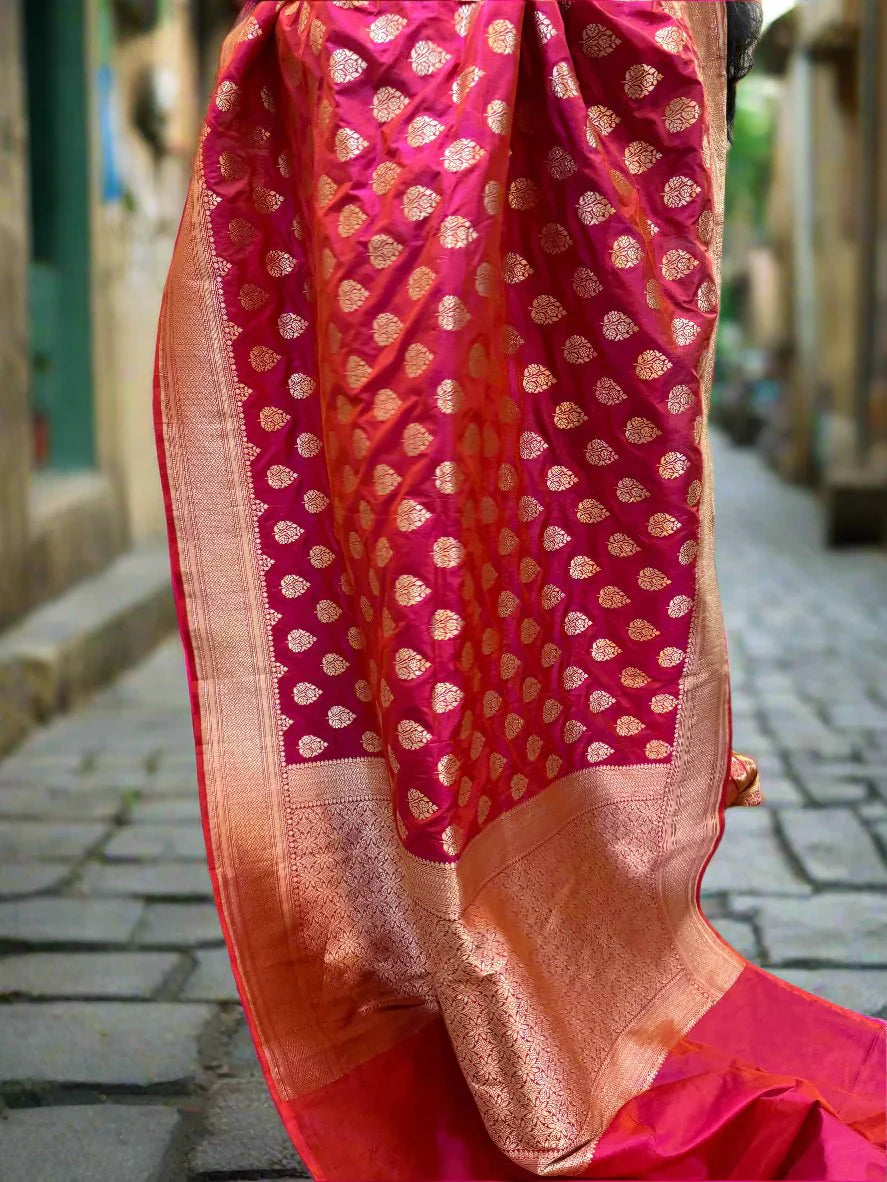
Banarasi Saree – From the Streets of Kashi to the World
Share
History
The Banarasi saree originates from Varanasi (Kashi), one of the oldest cities in India. During the Mughal period, local weavers began blending silk and gold Zari threads to create rich brocades. At that time, these sarees were exclusive to royal families and wealthy merchants. Some masterpieces even took six months to one year to weave, with real gold and silver threads forming intricate motifs.
Unique Features
Pure silk base enriched with golden and silver Zari.
Patterns inspired by Mughal art floral vines, jaal (meshwork), and paisleys.
Rich jewel tones deep red, emerald green, royal blue, and magenta.
Traditional Draping Styles
1. Straight Pallu Style (North Indian)
The saree is wrapped around the waist and the pallu falls straight over the shoulder.
Brides often prefer this for a majestic look.
2. Gujarati Draping Style (Seedha Pallu)
The pallu is brought to the front and spread across the chest, showcasing the intricate zari work.
This is ideal for heavy bridal pallus with grand motifs.
3. Bridal Draping with Waist Belt
A Banarasi saree paired with a beaded or embroidered waist belt accentuates the silhouette.
Traditional bridal jewelry like matha patti, nath (nose ring), bangles, and earrings add a royal touch.
Modern Styling
Contrasting blouses (e.g., a green Banarasi with a mustard blouse).
Saree draped with a sleek belt for a runway look.
Fusion draping like gown-style pleats for cocktail functions.
